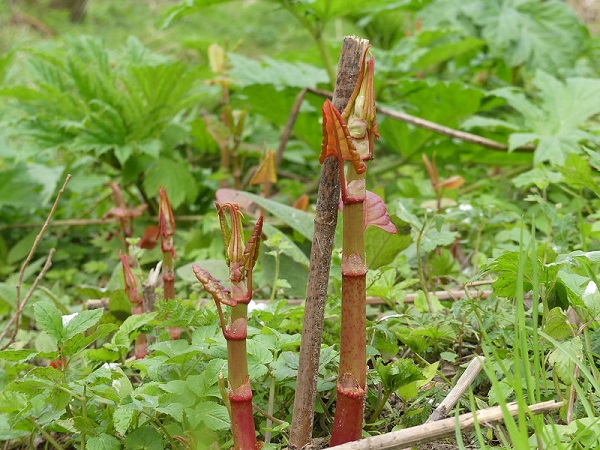
Japanese knotweed is one of the most - if not the most - invasive plant in Britain. As its name suggests, Japanese knotweed is native to Japan, where it is known as “itadori”. One interpretation of this name is ‘remove pain’ which alludes to the plant’s painkilling properties and use in various medicines to treat a variety of ailments ranging from cardiovascular diseases, fungal infections and skin inflammations.
Knotweed can also be found in other parts of Asia, such as China, Taiwan, and areas of Korea. In Japan, knotweed grows freely on mountainsides, volcanoes, and open spaces, which is a little different compared to the UK. In Japan, knotweed has natural predators that come in the form of invertebrates, fungi, ash deposits from volcanoes, and an erratic climate. In Britain, however, there are no natural predators to limit the spread of knotweed.
The history of Japanese knotweed is not as simple as you may think. How did it get here in the first place? Why did it spread so vigorously? And why is it such a problem today?
In this blog post, we take a deep dive into the history of Japanese knotweed to find some answers to the many questions surrounding this pesky plant.
Introduction of Japanese knotweed to Britain
German physician, botanist, and traveller Phillip Franz von Siebold found Japanese knotweed growing on the side of a volcano and planned to use it as an ornamental plant. The discovery was widely celebrated and as such, knotweed was named the ‘most interesting new ornamental plant of the year’ by the Society of Agriculture and Horticulture at Utrecht in Holland.
In 1854, Seibold sent a shipment of various plants including knotweed to the Royal Botanic Gardens in Kew, which was then shared with the Gardens in Edinburgh. This is where the plant began to spread as it was then sold commercially by nurseries.
The main pattern of distribution of knotweed was through intended planting and distribution - although this was before its invasive and destructive capabilities were realised. Using watercourses and soil transported during construction and road-building, knotweed began to spread naturally throughout the UK.
Interestingly, Ann Connelly (an expert in knotweed) has stated evidence from the 1960s suggests that showed knotweed had been deliberately placed in Welsh coal-mining valley as it was good for stabilising loose soil.
Why is knotweed such a problem now?
Knotweed is able to thrive thanks to its deep root system, which is the main cause of the huge problems found within garden and properties all across the UK. With nothing to combat its spread, knotweed can grow unchallenged and to devastating effect.
At its most aggressive, knotweed can grow up to 20cm per day, and push its roots as deep as 3m into the ground. It also has the ability to overpower almost all other plants, totally swamping them and preventing them from getting any sunlight.
Recent Japanese knotweed history & treatment trials
As a result of its destructive nature, it is now an offence under section 14(2) of the Wildlife and Countryside Act 1981 to “plant or otherwise cause Japanese knotweed to grow in the wild” and is now classed as “controlled waste" under part 2 of the Environmental Protection Act 1990.
This requires disposal at licensed landfill sites. On March 9th 2010, the decision was taken to release into the wild a Japanese psyllid insect, Aphalara itadori. Its diet is highly specific to Japanese knotweed and shows good potential for its control. Controlled release trials began in South Wales in 2016.
Japanese knotweed removal
Due to Japanese knotweed's history of spreading quickly and ferociously, it has become a huge problem for homeowners throughout the UK. It requires specialised treatment and removal by trained, qualified professionals and that's where we come in!
Here at Total Weed Control, we provide expert identification and removal services that ensure the Japanese knotweed on your property is in fact knotweed and is then properly eradicated. We offer a choice of two survey and treatment plans that you can choose based on the severity of your knotweed infestation, which you can browse below.
Our Japanese Knotweed Treatments >
For more information on our knotweed removal services or on the history of Japanese knotweed, be sure to get in touch with a member of our team today. We’ll be more than happy to help!
